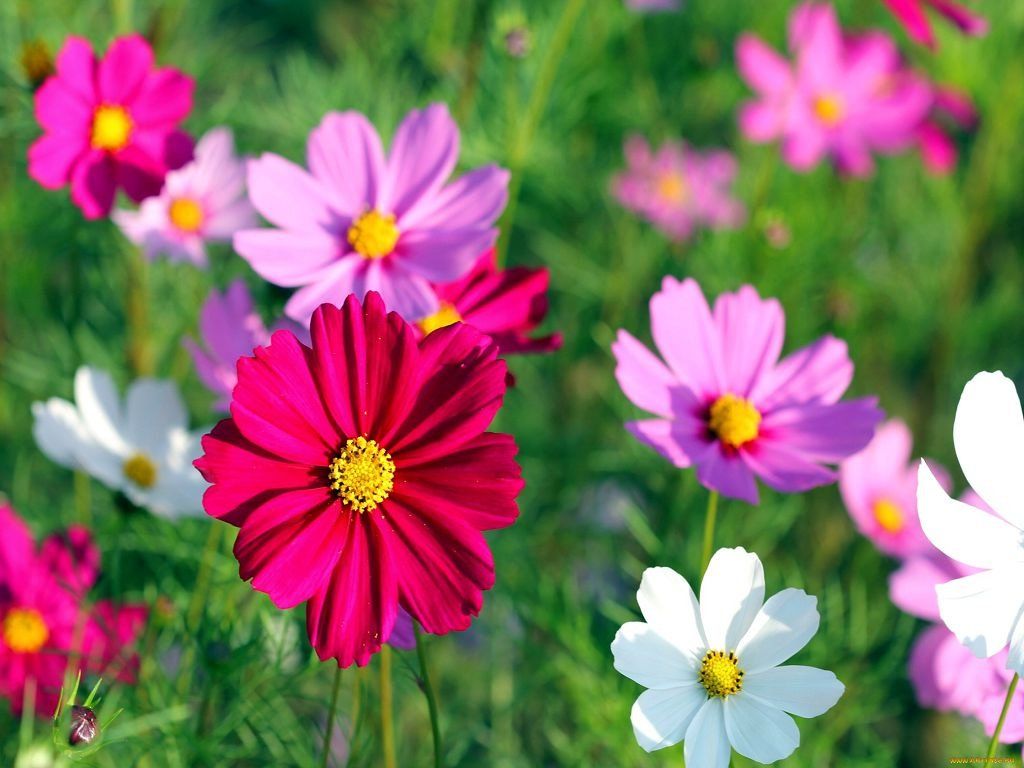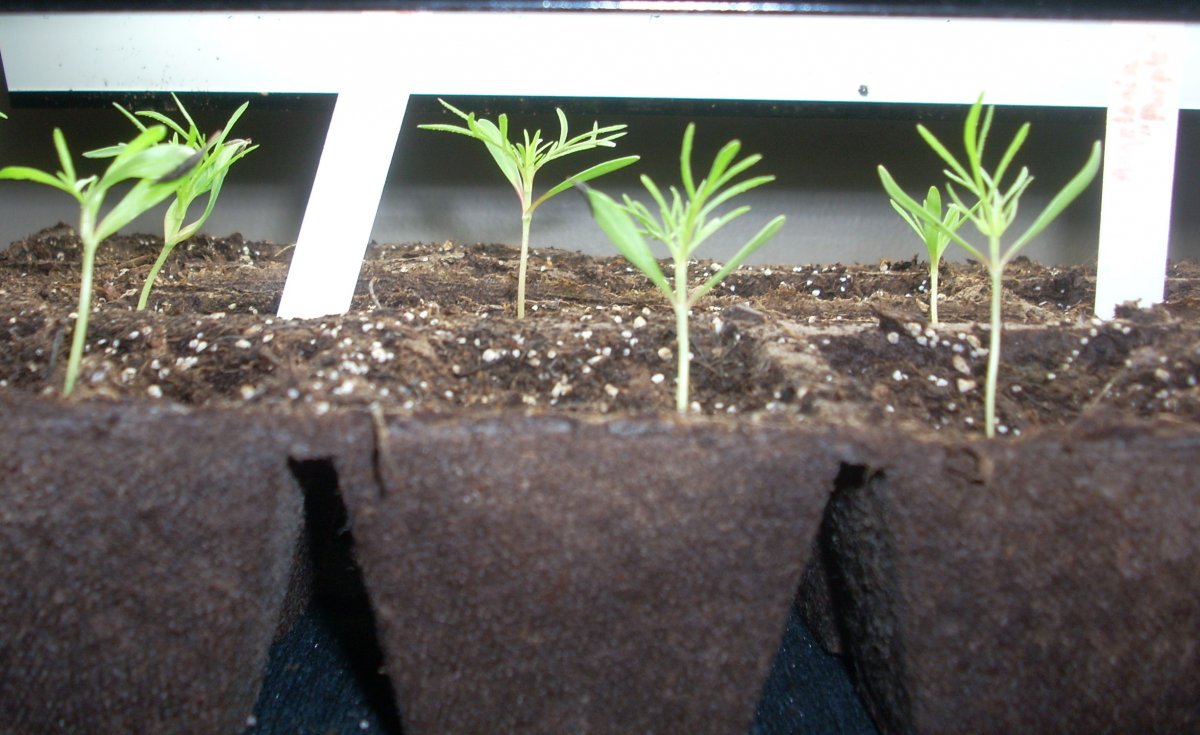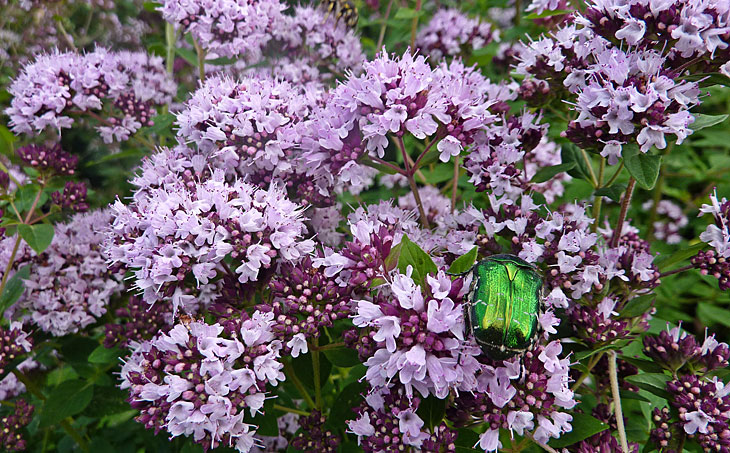Content:
Today, few people know kosmeya. It is planted in garden and adjoining territories, in parks and in flower beds. The bright and colorful flowers of the cosmos are associated with summer and sun. When looking at the plant, it seems that it is a bright green carpet on which multicolored stars are scattered.
Agrotechnics of culture
Kosmeya came to Russia from Mexico, so it can easily endure dry periods. The popularity of the flower is also due to the fact that it is well able to withstand frost. Thanks to this ability, the cosmos can be grown without problems both in the Moscow region and in the Urals.
The flower is not picky about the soil. It should be loose and well-drained. If the soil is not fertile enough, it is necessary to add mineral and organic fertilizers to it.
Cosmeya can be grown both in the shade and in a sunny area. Experienced gardeners note that in the shade, the plant will bloom much weaker than in a well-lit area.
Reproduction by seedlings
Growing cosmos seedlings is considered the most profitable and practical option. It makes it possible to get young plants that give lush flowering already in the year of planting in open ground. To grow seedlings, you must take any containers and fill them with soil mixture (peat and soil from the garden in equal quantities). The soil is well moistened with a spray bottle and tamped.
Cosme seeds are laid out on the soil surface at a distance of 8-9 cm from each other, 2 pieces side by side. It is better to press them down a little and leave them in this position, covering them with transparent polyethylene.
The containers are placed on a lighted windowsill. The soil is moistened as it dries by using a spray bottle. Cosme seeds germinate quickly at a temperature of 15-19 degrees.
After the appearance of the first shoots, the shelter is removed, and the air temperature in the room drops to 15-16 degrees. When the first 2 leaves are formed, the seedlings dive.
Seedlings must be hardened by taking them outside for 1-3 hours.
Planting seedlings in open ground is performed when there is no longer a threat of spring frosts. The distance between young plants should be within 15-30 cm. This will help in the future to create a beautiful and dense green carpet with bright colors.
Kosmeya, growing from seeds: when to plant
Many gardeners have a question: when growing terry cosmos from seeds, when to plant it? Seed propagation of the perennial kosmeya flower is recommended to be performed in early May or after the onset of stable frosts in the fall. To do this, holes are made in the ground at a distance of 30-35 cm. 2-3 seeds are thrown into each. The reason for such a planting is that in this case the kosmeya will form dense plantings that do not require thinning.
If planting is carried out in spring, the soil must first be well moistened. When sowing seeds in autumn, watering the soil is not required. In autumn, the holes are not covered with soil, but in winter they are simply covered with a layer of snow.
Kosmeya: planting and care in the open field
Despite the fact that kosmeya tolerates drought well, its young plants need timely watering. During the formation of flower stalks, watering is carried out only during severe and prolonged drought. This helps to prolong the flowering period at home and to ensure its abundance.
Plant feeding is carried out at the beginning of the bud formation period. For this, mineral fertilizers are used. The following dressings are performed 2-3 more times throughout the summer. It is not recommended to fertilize kosmeya during the growing season. This may be the reason why cosmos does not bloom; greenery alone is unlikely to please the gardener.
Planting and caring for perennial cosmeia is not particularly difficult. If the area where the plant grows is not protected from the wind, it is recommended to tie up the grown flowers. To do this, it is enough to drive a few pegs around the planting of cosmos and tie them with twine.
As soon as the kosmeya begins to bloom in the flowerbed, it is necessary to ensure that no wilted flowers remain on the plants. They must be removed in a timely manner. This will help prolong the flowering period and ensure its splendor.
Caring for cosmeia is also very simple due to the fact that the plant is resistant to diseases and pests. To prevent the attack of harmful insects near the site with cosmos, it is recommended to plant plants with a strong and pungent odor: calendula or mint. Marigolds, chamomile or phloxes are ideal neighbors for cosme.
To collect seeds in order to plant them next year, you must leave the strongest, lush and beautiful flowers. Cosme seeds look like small skewers. Their germination is able to persist for 2-3 years. You can start collecting seeds in late summer or early fall. Ripe seeds turn dark and bloom like a fan. When you shake the flower, they easily crumble into the palm of your hand. To store them, it is better to use paper or cloth bags that are placed in a dry and warm place.
Preparing for winter
Mostly all varieties of cosmeas easily endure the winter, without requiring special training and shelter. But the same cannot be said for the blood-red cosmos. It is not adapted to the climatic conditions typical for the middle zone. This species needs careful preparation for winter.
If frozen stems are found in spring, they are removed from the soil surface, and their roots rot over time and act as fertilizer for other plants.
All these activities are not a guarantee that the blood-red cosmeya will be able to winter well, therefore it is recommended to grow this plant variety not in open ground, but in pots or containers. With the onset of cold weather, containers must be brought into a warm room or placed in greenhouses.
Providing the most proper care and timely planting, the gardener will receive a lush green carpet, decorated with colorful flowers, from summer until frost.















